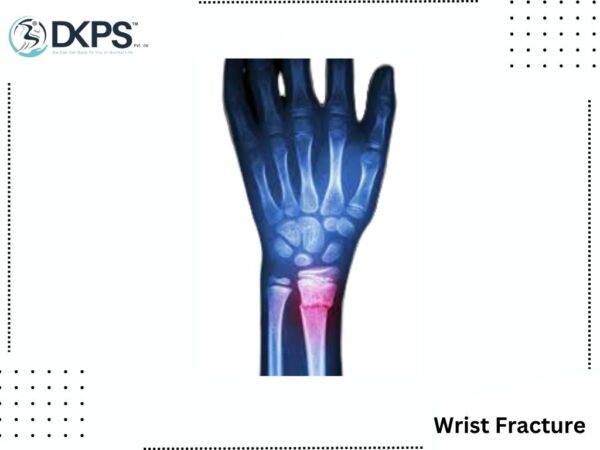- Home
- About Us
- DKPS Dealing
- BLOG
- Delhi NCR
- Delhi
- Physiotherapy at Home Near Me | Physiotherapist in South Delhi
- Best Chiropractor in Delhi
- Physiotherapist in Delhi
- Cupping Therapy in Delhi
- Home Nursing Services in Delhi
- Needle Therapy for Back Pain
- Sports Injury Physiotherapy
- Best Physiotherapist Visit at Home in Rohini Sector 24
- Physiotherapy at Home In Rohini Sector 9 |
- Physiotherapist in Pitampura | Physiotherapy at Home in Pitampura
- Physiotherapy at home in Rohini sector 29
- Physiotherapist in Paschim Vihar
- Physio home visit | Home Visit Physiotherapy |
- Physiotherapist in Saket | Best Physiotherapist in Saket |
- Physiotherapist In Janakpuri | Best Physiotherapist in Janakpuri |
- Best Physiotherapist in Punjabi Bagh | Punjabi Bagh Physiotherapist |
- Best Physiotherapist Service at Home in Dwarka, Delhi
- Best Physiotherapist in Chandigarh at Home Visit
- Faridabad
- Gurugram
- Noida
- Best Physiotherapy Gorakhpur
- Best Physiotherapist in Lucknow | Physiotherapist in Lucknow near me |
- Delhi
- Mumbai
- Delhi NCR
- Department
- Doctors
- Gallery
- Packages
- Contact Us
- Home
- About Us
- DKPS Dealing
- BLOG
- Delhi NCR
- Delhi
- Physiotherapy at Home Near Me | Physiotherapist in South Delhi
- Best Chiropractor in Delhi
- Physiotherapist in Delhi
- Cupping Therapy in Delhi
- Home Nursing Services in Delhi
- Needle Therapy for Back Pain
- Sports Injury Physiotherapy
- Best Physiotherapist Visit at Home in Rohini Sector 24
- Physiotherapy at Home In Rohini Sector 9 |
- Physiotherapist in Pitampura | Physiotherapy at Home in Pitampura
- Physiotherapy at home in Rohini sector 29
- Physiotherapist in Paschim Vihar
- Physio home visit | Home Visit Physiotherapy |
- Physiotherapist in Saket | Best Physiotherapist in Saket |
- Physiotherapist In Janakpuri | Best Physiotherapist in Janakpuri |
- Best Physiotherapist in Punjabi Bagh | Punjabi Bagh Physiotherapist |
- Best Physiotherapist Service at Home in Dwarka, Delhi
- Best Physiotherapist in Chandigarh at Home Visit
- Faridabad
- Gurugram
- Noida
- Best Physiotherapy Gorakhpur
- Best Physiotherapist in Lucknow | Physiotherapist in Lucknow near me |
- Delhi
- Mumbai
- Delhi NCR
- Department
- Doctors
- Gallery
- Packages
- Contact Us
Wrist Fracture
- Home
- Wrist Fracture

What is Wrist Fracture ?
Wrist fractures are a common type of injury that occurs when one or more of the bones in the wrist are broken. This type of injury can be caused by a variety of factors, including falls, car accidents, and sports injuries. Wrist fractures can be very painful and can significantly impact a person’s ability to perform everyday activities. However, with proper treatment and rehabilitation, most people can make a full recovery from a wrist fracture.
In this article, we will discuss wrist fractures in detail, including their causes, symptoms, diagnosis, and treatment. We will also discuss the role of physiotherapy in the rehabilitation process and provide some exercises that can help in the recovery process.
Causes of Wrist Fractures:
Wrist fractures can be caused by a variety of factors, including falls, car accidents, and sports injuries. A fall onto an outstretched hand is one of the most common causes of wrist fractures. This type of injury is especially common among older adults, who may have weaker bones and are more prone to falls.
Sports injuries, particularly those that involve contact sports, can also cause wrist fractures. Activities like skateboarding, snowboarding, and gymnastics can put significant stress on the wrist, increasing the risk of fractures.
In some cases, wrist fractures can also be caused by car accidents. When a car accident occurs, the impact can cause the wrist to twist or bend in unnatural ways, leading to fractures.
Symptoms of Wrist Fractures:
The symptoms of a wrist fracture can vary depending on the severity of the injury. Some common symptoms include:
Pain and tenderness around the wrist area
Swelling and bruising around the wrist
Difficulty moving the wrist or hand
Numbness or tingling in the fingers
Deformity of the wrist or hand
Diagnosis of Wrist Fractures:
To diagnose a wrist fracture, a doctor will perform a physical examination and may order imaging tests, such as X-rays, CT scans, or MRI scans. These tests can help determine the severity and location of the fracture, which can inform the treatment plan.
Treatment of Wrist Fractures:-
The treatment of wrist fractures depends on the severity of the injury. In some cases, a simple wrist splint or cast may be enough to immobilize the wrist and allow the bone to heal. In more severe cases, surgery may be necessary to realign the bones and stabilize the wrist.
Regardless of the severity of the injury, physiotherapy is an essential part of the recovery process. Physiotherapy can help reduce pain, improve range of motion, and strengthen the muscles surrounding the wrist.
Role of Physiotherapy in Wrist Fracture Recovery:
Physiotherapy-
plays a crucial role in the recovery process for people with wrist fractures. A physiotherapist can create a customized treatment plan that includes exercises to improve flexibility, strength, and range of motion in the wrist and hand.
Some of the ways that physiotherapy can help in the recovery process include:
Pain management:
Physiotherapists can use a variety of techniques, such as heat therapy, ice therapy, and massage, to help reduce pain and inflammation in the wrist area.
Range of motion exercises:
Range of motion exercises can help improve flexibility in the wrist and prevent stiffness from developing. These exercises may include wrist curls, wrist extensions, and wrist rotations.
Strengthening exercises:
Strengthening exercises can help improve muscle tone and increase strength in the muscles surrounding the wrist. These exercises may include grip strength exercises, wrist flexion, and wrist extension exercises.
Functional training:
Functional training involves practicing everyday activities to improve coordination and help individuals regain their ability to perform everyday tasks. These activities may include picking up objects, typing on a keyboard, and using utensils.
Education:
Physiotherapists can educate patients on proper ergonomics and body mechanics to prevent future injuries and ensure a safe and effective recovery.
Exercises to Help Recover from Wrist Fracture:
The following exercises can help in the recovery process for individuals with wrist fractures:
Wrist flexion:-
Sit with your forearm supported on a table or armrest. Hold a weight in your hand and slowly bend your wrist up towards your forearm. Repeat for 10-15 repetitions.
Wrist extension:
Sit with your forearm supported on a table or armrest. Hold a weight in your hand and slowly bend your wrist down towards the table. Repeat for 10-15 repetitions.
Wrist rotations:
Sit with your forearm supported on a table or armrest. Hold a weight in your hand and rotate your wrist in a circular motion, first clockwise, then counterclockwise. Repeat for 10-15 repetitions in each direction.
Grip strength exercises:
Hold a soft ball or towel in your hand and squeeze tightly for a few seconds. Repeat for 10-15 repetitions.
Finger stretches:
Hold your fingers together and gently pull them towards your wrist until you feel a stretch in your fingers. Hold for 10-15 seconds and repeat on the other hand.
Conclusion:-
Wrist fractures are a common injury that can significantly impact a person’s ability to perform everyday activities. However, with proper treatment and rehabilitation, most people can make a full recovery from a wrist fracture. Physiotherapy plays a crucial role in the recovery process, and physiotherapists can create a customized treatment plan that includes exercises to improve flexibility, strength, and range of motion in the wrist and hand. By following a physiotherapy treatment plan and incorporating exercises into their daily routine, individuals can recover from a wrist fracture and regain their ability to perform everyday tasks.
How DKPS physiotherapist can help-
Physiotherapy is an important part of the recovery process for individuals with wrist fractures. The exercises and techniques used by physiotherapists can help improve flexibility, strength, and range of motion in the wrist and hand, and reduce pain and inflammation. Additionally, physiotherapists can educate patients on proper ergonomics and body mechanics to prevent future injuries.
If you have suffered a wrist fracture, it is important to seek medical attention as soon as possible. A physician can properly diagnose the injury and recommend an appropriate treatment plan. In some cases, surgery may be necessary to realign the bones and stabilize the wrist. After surgery, physiotherapy can help speed up the recovery process and improve overall outcomes.
In conclusion, wrist fractures are a common injury that can significantly impact a person’s ability to perform everyday activities. However, with proper treatment and rehabilitation, most people can make a full recovery from a wrist fracture. Physiotherapy is a crucial part of the recovery process, and physiotherapists can create a customized treatment plan that includes exercises to improve flexibility, strength, and range of motion in the wrist and hand. By following a physiotherapy treatment plan and incorporating exercises into their daily routine, individuals can recover from a wrist fracture and regain their ability to perform everyday tasks.
